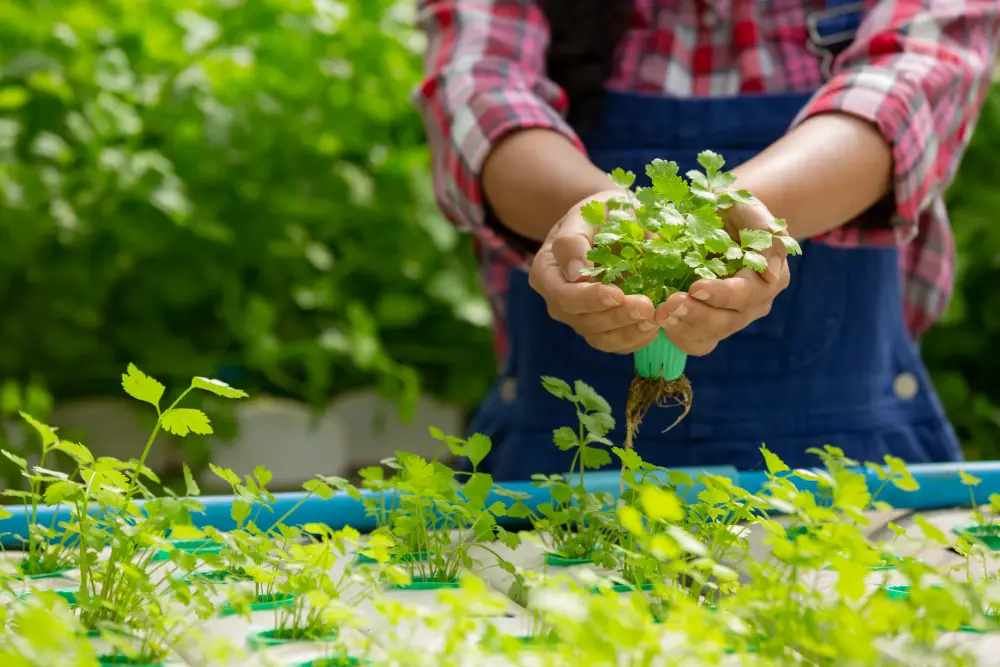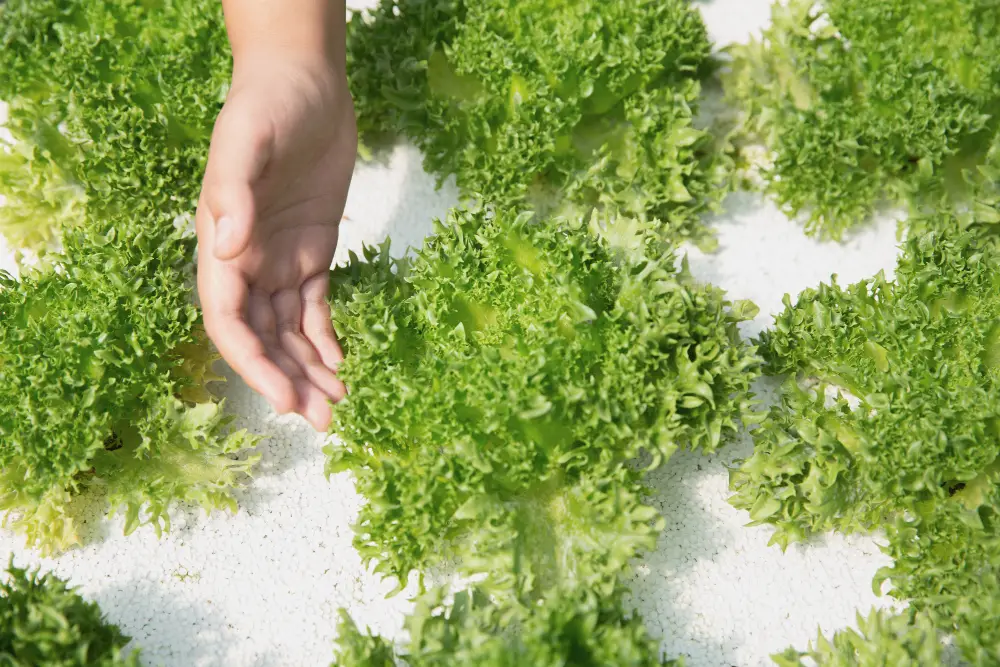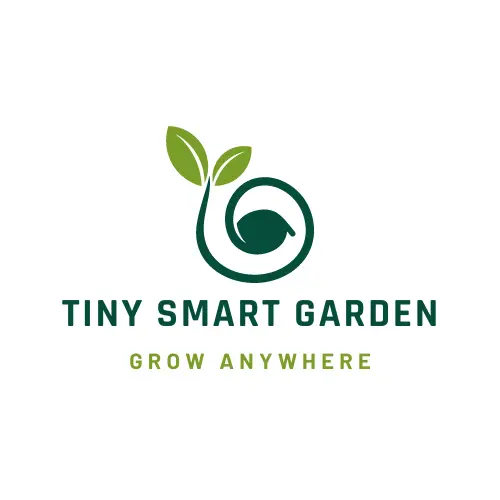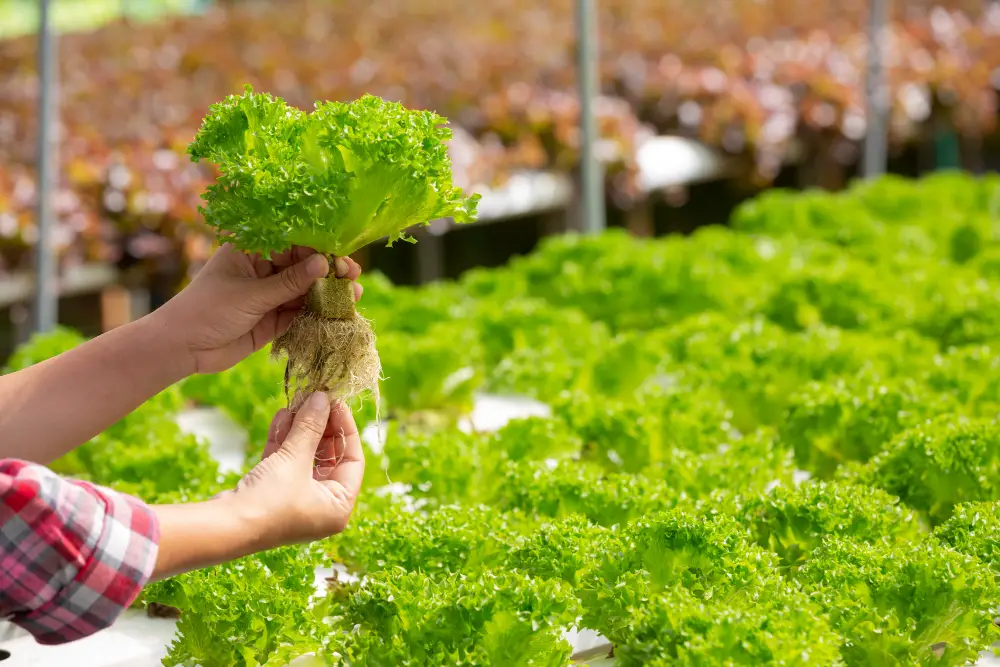Image by jcomp on Freepik
Hydroponic gardening is a type of gardening that involves growing plants without using soil. Instead of soil, plants are grown in a nutrient-rich water solution that is delivered directly to the plant roots. This method of gardening is becoming increasingly popular, especially in urban areas where outdoor gardening space is limited.
The History of Hydroponic Gardening
Hydroponic gardening has been around for centuries, with evidence suggesting that the ancient Babylonians used a form of hydroponic gardening to grow crops. However, it wasn’t until the 20th century that hydroponic gardening became more popular. In the 1930s, scientists began experimenting with different hydroponic techniques, and by the 1940s, hydroponic gardening was being used to grow crops in commercial greenhouses.
Table of Contents
Types of Hydroponic Systems
There are several different types of hydroponic systems, each with its own advantages and disadvantages. The most common types of hydroponic systems include:
1. Deep Water Culture (DWC)
Deep Water Culture, or DWC, is one of the simplest and most popular types of hydroponic systems. DWC involves suspending the plant roots in a nutrient-rich water solution. This system is easy to set up and maintain, making it a popular choice for beginners. DWC is an effective system for growing leafy greens, herbs, and some vegetables. However, it’s essential to monitor the pH and nutrient levels regularly to ensure that the plants receive the correct amounts of nutrients.
2. Drip Irrigation
Drip irrigation is a hydroponic system that involves delivering a nutrient-rich water solution directly to the plant roots through small tubes using a pump. This system is more complex than DWC but can be more efficient in terms of water usage. Drip irrigation is an excellent choice for larger plants that require a more substantial amount of water and nutrients.
3. Ebb and Flow
Ebb and flow, also known as flood and drain, involves flooding the growing area with a nutrient-rich water solution and then draining it back into a reservoir. This system is versatile and can be used for a wide variety of plants. Ebb and flow is also a low-maintenance system that can be set up relatively easily.
4. Aeroponics
Aeroponics is a hydroponic system that involves suspending the plant roots in the air and delivering the nutrient-rich water solution through a fine mist. This system can be very efficient in terms of water usage and can produce high yields. However, it can be more complex to set up and maintain than some of the other hydroponic systems.
Advantages of Hydroponic Gardening

Image by jcomp on Freepik
Hydroponic gardening offers several advantages over traditional soil-based gardening. Some of the most significant advantages include:
1. Increased Yield
Hydroponic gardening can produce higher yields than traditional soil-based gardening. This is because plants grown hydroponically can be grown closer together, and the nutrient-rich water solution can be delivered directly to the plant roots.
2. Water Efficiency
Hydroponic gardening can be much more water-efficient than traditional soil-based gardening. This is because the water used in hydroponic systems can be recycled and reused, reducing water waste. Hydroponic systems use up to 90% less water than traditional soil-based methods.
3. Space Efficiency
Hydroponic gardening can be much more space-efficient than traditional soil-based gardening. This is because plants can be grown vertically, allowing for more plants to be grown in a smaller area.
4. Pest and Disease Control
Hydroponic gardening can be much more effective at controlling pests and diseases than traditional soil-based gardening. This is because the nutrient-rich water solution can be sterilized and monitored, reducing the risk of contamination. Hydroponic systems eliminate the risk of soil-borne diseases that can affect plant growth.
Disadvantages of Hydroponic Systems
- Initial cost: Hydroponic systems can be more expensive to set up than traditional soil-based methods.
- Monitoring required: Hydroponic systems require regular monitoring of pH and nutrient levels to ensure proper plant growth.
- Technical knowledge required: Some hydroponic systems require technical knowledge and experience to set up and maintain.
Getting Started with Hydroponic Gardening

Image by jcomp on Freepik
If you’re interested in getting started with hydroponic gardening, there are a few things you’ll need to consider. Here are some tips to help you get started:
1. Choose the Right System
There are several different types of hydroponic systems, each with its own advantages and disadvantages. Consider your space, budget, and experience level when choosing a system.
2. Choose the Right Plants
Not all plants are suitable for hydroponic gardening. Some plants, such as lettuce, spinach, and herbs, are well-suited for hydroponic gardening, while others, such as root vegetables, may be more challenging to grow.
3. Invest in Quality Equipment
Investing in quality equipment is essential for successful hydroponic gardening. This includes a grow tent, grow lights, a water pump, and a nutrient solution. Choose equipment that is durable, reliable, and designed specifically for hydroponic gardening.
4. Monitor Nutrient Levels
Monitoring nutrient levels is essential for successful hydroponic gardening. Nutrient levels can be monitored using a pH meter and an electrical conductivity (EC) meter. Regular monitoring and adjustments can help ensure that your plants are receiving the proper nutrients.
5. Start Small
If you’re new to hydroponic gardening, it’s best to start small. Begin with a small system and a few plants to get a feel for the process. As you gain experience and confidence, you can gradually expand your hydroponic garden.
Conclusion
Hydroponic gardening is a versatile and efficient method of growing plants that is becoming increasingly popular. With the right equipment, plants can be grown year-round in a small space, making it an excellent option for urban gardeners. By following the tips outlined in this article, you can get started with hydroponic gardening and enjoy the benefits of fresh, homegrown produce.
FAQs
- Is hydroponic gardening difficult?
Hydroponic gardening can be more challenging than traditional soil-based gardening, but with the right equipment and knowledge, it can be a rewarding experience.
- How much does it cost to get started with hydroponic gardening?
The cost of starting a hydroponic garden can vary widely depending on the size of the system, the type of equipment used, and the plants being grown. However, a small hydroponic system can be set up for a few hundred dollars.
- What plants are best suited for hydroponic gardening?
Plants that are well-suited for hydroponic gardening include lettuce, spinach, herbs, tomatoes, and peppers.
- Can hydroponic gardening be done outdoors?
Hydroponic gardening can be done outdoors, but it is often more challenging due to factors such as temperature fluctuations, pests, and weather conditions.
- Is hydroponic gardening more sustainable than traditional gardening?
Hydroponic gardening can be more sustainable than traditional gardening in terms of water usage and space efficiency. However, the energy required to run the equipment can offset some of these benefits.


